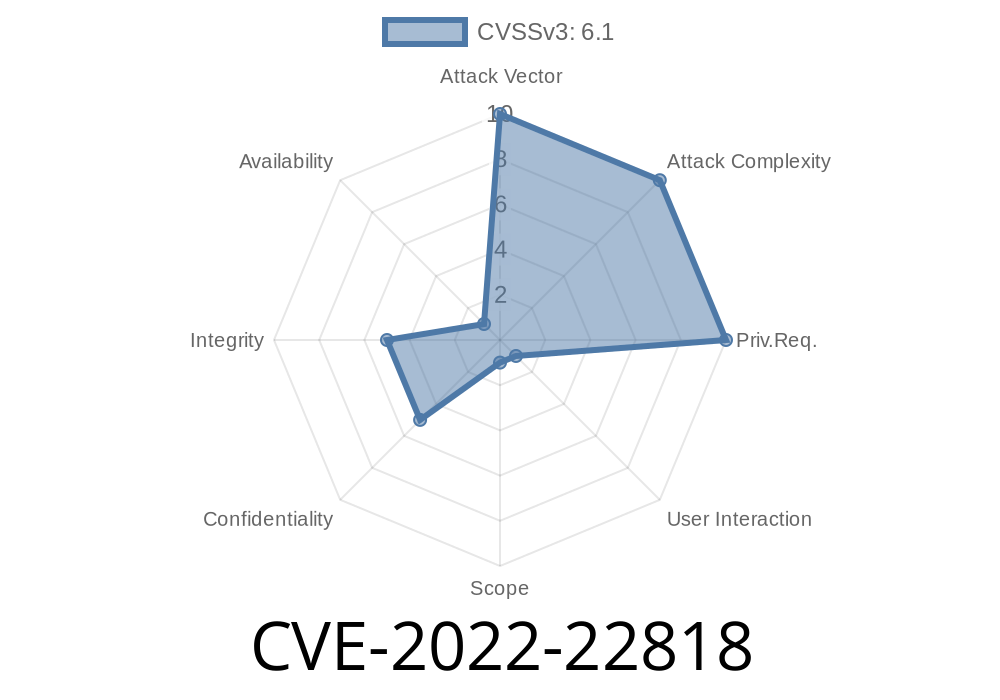The Django web framework is one of the most popular and widely used Python web frameworks for developing web applications. However, recently a vulnerability with the identifier CVE-2022-22818 was discovered. In this post, we will dive deep into understanding this vulnerability, how it could be exploited, and what you can do to secure your Django applications against this particular threat.
CVE-2022-22818 revolves around the {% debug %} template tag in Django, which is designed to help developers in debugging by providing a way to display context data in a human-readable format. However, this tag fails to adequately encode the context, leading to a potential cross-site scripting (XSS) vulnerability. The vulnerable versions of Django are:
Django 4. before 4..2
Let's take a closer look at the vulnerability and explore how an attacker could exploit it.
Consider the following Django template code as an example
{% debug %}
In vulnerable versions of Django, the above snippet does not correctly escape the HTML in the output, enabling an attacker to inject malicious scripts. Imagine an attacker provides input like:
<script>alert('Hacked!')</script>
The vulnerable {% debug %} template tag would render this input as-is, causing the script to execute on the victim's browser.
Exploit Details
To abuse this vulnerability, an attacker would need to find a way to inject malicious context data into the target application. They could achieve this through various attack vectors, like sending crafted HTTP requests, user input forms, or other data sources that the application utilizes.
Once the attacker manages to inject malicious context data, the vulnerable {% debug %} template tag would render the context without proper escaping. This could lead to unauthorized access to user data, session hijacking, or other malicious actions on the affected site.
For further details on this vulnerability, check the following resources
- Django Project Security Advisory: https://www.djangoproject.com/weblog/2022/feb/01/security-releases/
- CVE Details: https://cve.mitre.org/cgi-bin/cvename.cgi?name=CVE-2022-22818
Steps to Mitigate the Vulnerability
The immediate solution to mitigate this vulnerability is to update your Django installation to a non-vulnerable version. You should update your Django:
You can upgrade Django using pip
pip install --upgrade django
In addition to upgrading Django, it is crucial to follow best practices for handling user input and context data, such as sanitizing and validating user input, securely storing sensitive data, and properly handling errors and exceptions.
In conclusion, even though Django is a robust and secure web framework, it is not immune to vulnerabilities. It is essential to keep your dependencies up-to-date and follow security best practices to protect your applications from threats like CVE-2022-22818 and other potential vulnerabilities. By understanding how these vulnerabilities work and proactively securing your Django projects, you can minimize your applications' risk and ensure a safe experience for your users.
Timeline
Published on: 02/03/2022 02:15:00 UTC
Last modified on: 02/22/2022 10:19:00 UTC
